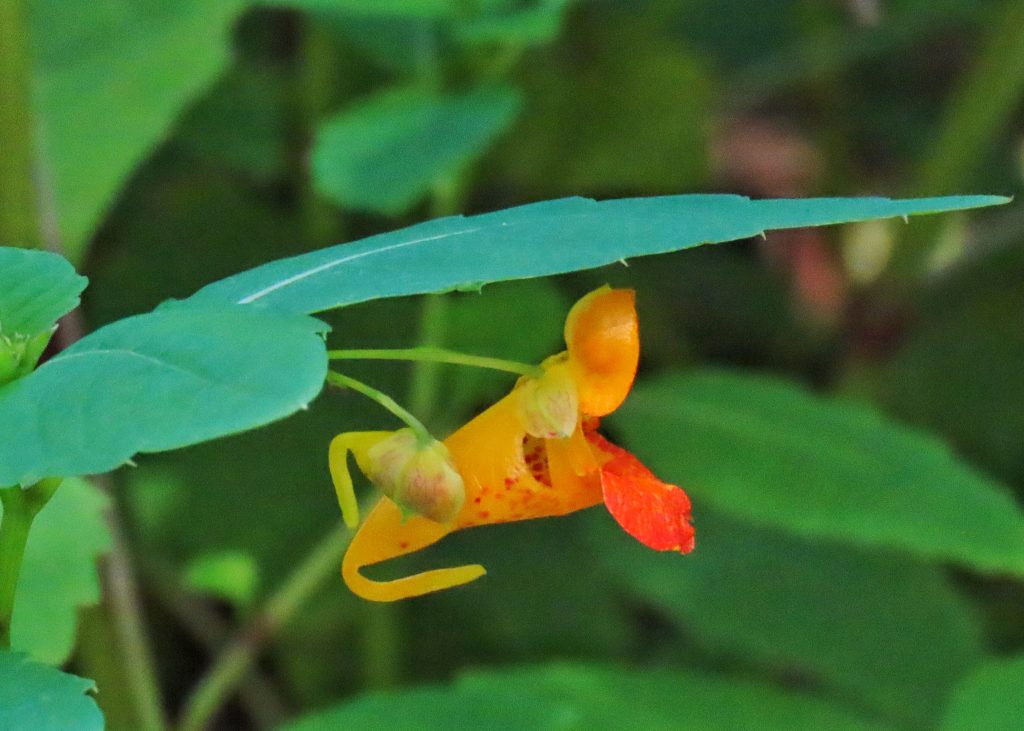
With its orange, abstract French horn flowers, a blooming Cape Jewelweed isn’t likely to be confused with any other plant. These beautiful flowers, once they have matured into oblong seed pods, eventually become an amazing seed distribution mechanism which, under the slightest pressure or just the fullness of time, undergo explosive dehiscence whereby the 5 valves of the pod split violently and fling the seeds some distance. This is the origin of the colloquial common name Touch-me-not.
They are native to northeastern North America, but have naturalized in the western part of the PNW in many damp, partly shaded locations along watercourses and wetlands, often forming large, pure stands.
They are an annual, arising in the spring from last years seed, and reaching nearly 4′ tall before collapsing rapidly after the first frosts. The showy orange flowers must be cross pollinated by hummingbirds or insects, but the plants also have very small (1mm) self fertilizing cleistogamous flowers which form near the leaf bases.
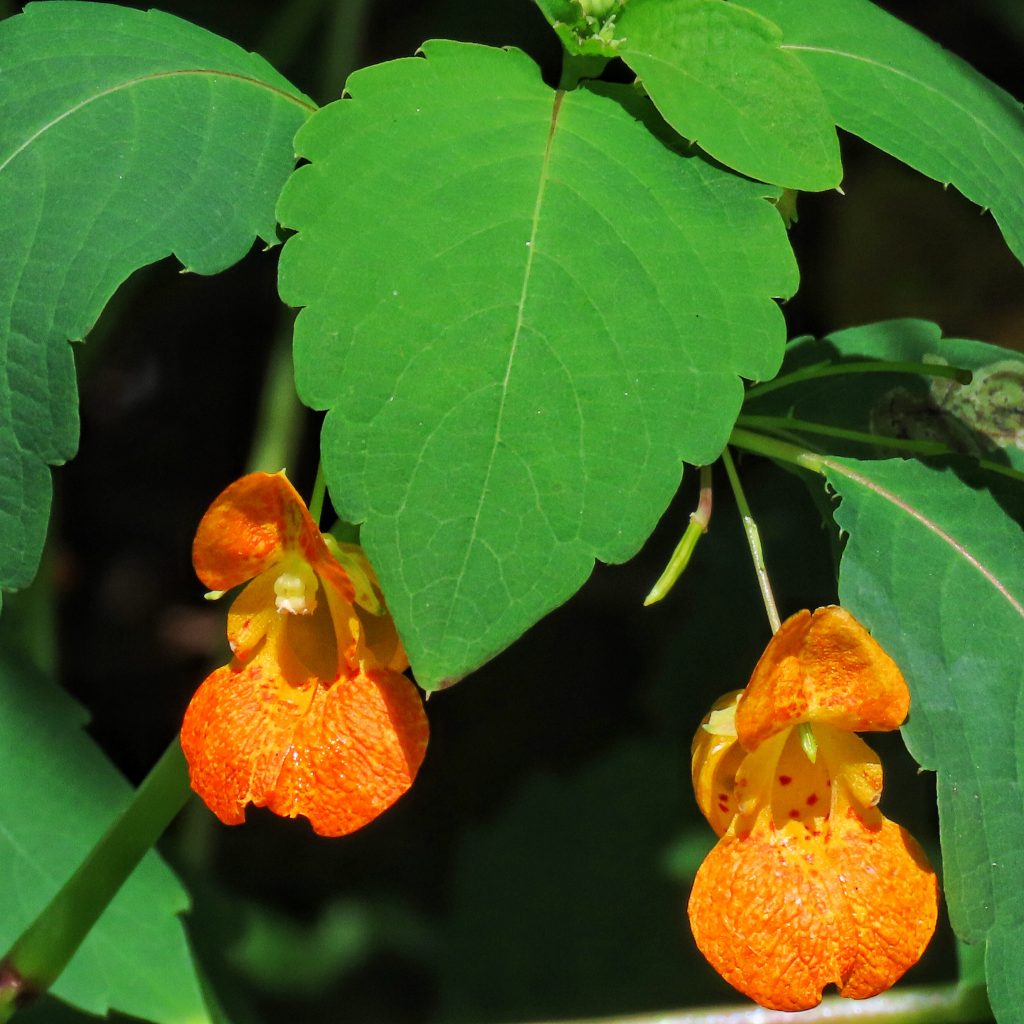
Impatiens capensis | Cape Jewelweed | Wildflowers of the Pacific Northwest
https://www.fs.fed.us/wildflowers/plant-of-the-week/impatiens_capensis.shtml
https://www.illinoiswildflowers.info/wetland/plants/or_jewelweed.htm
Size- up to 4’ tall
Habitat- Damp, muddy areas along watercourses and wetlands
Range- West of the Cascades in our region
Blooms- All summer
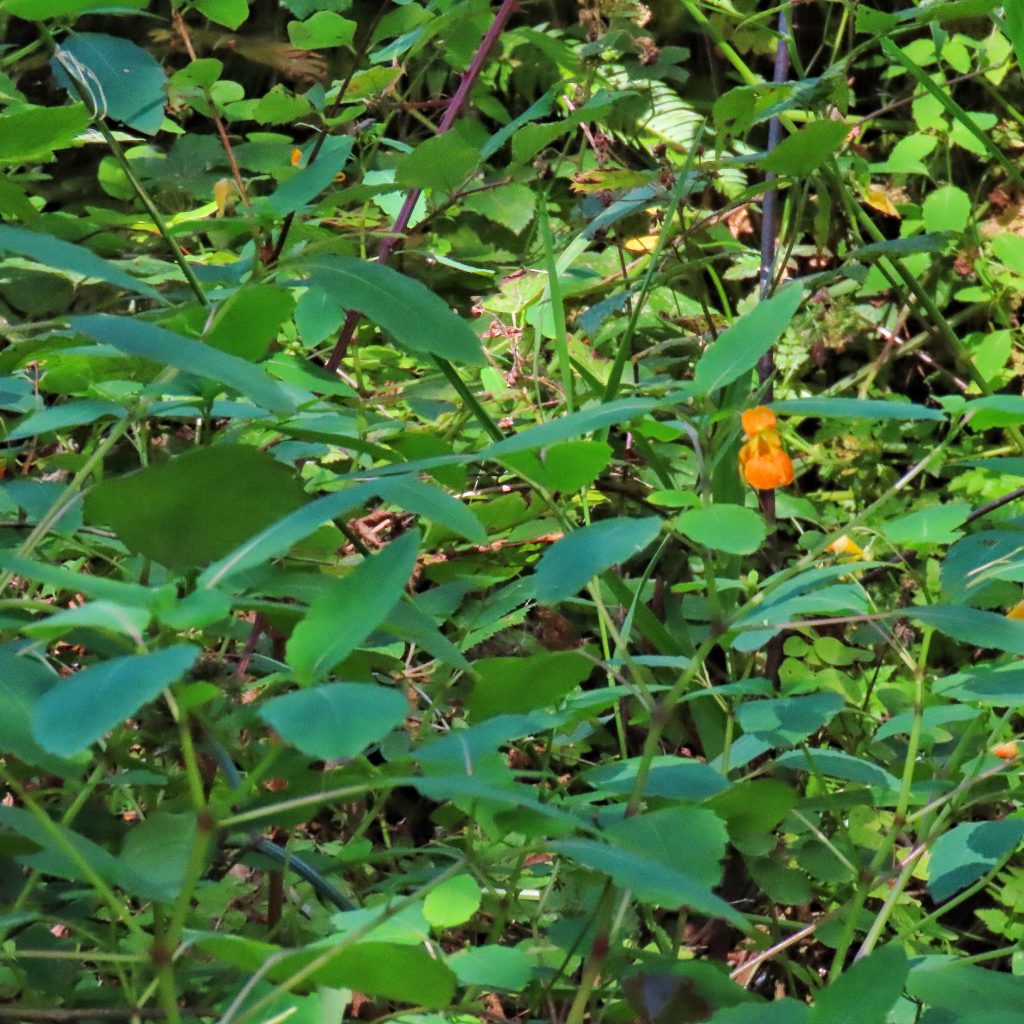
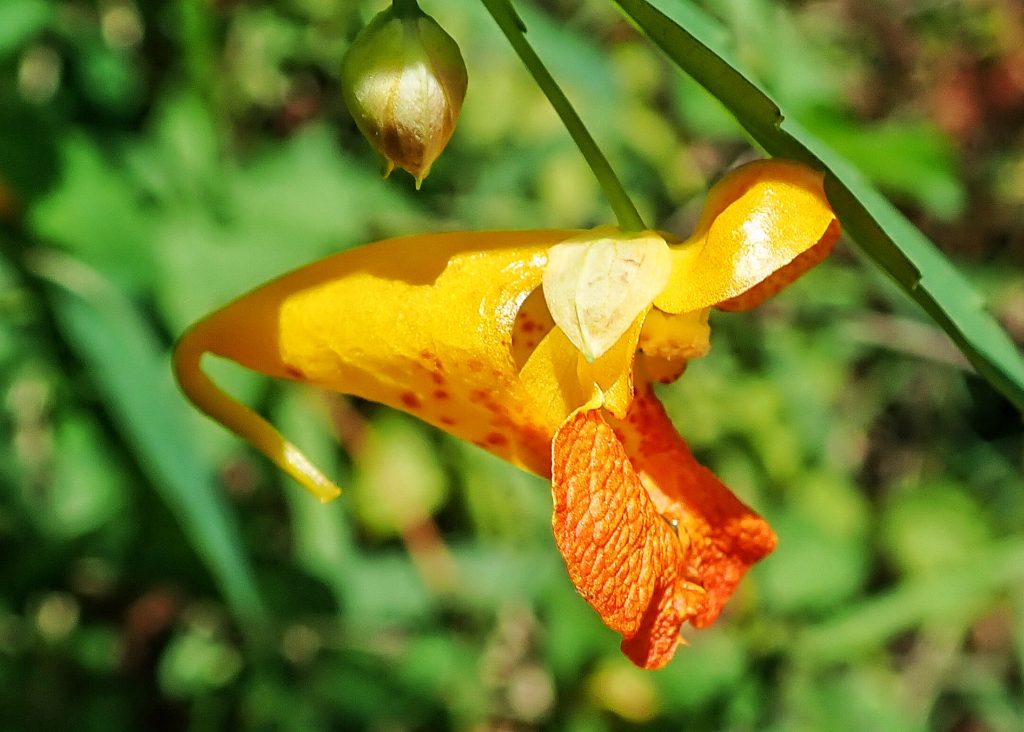
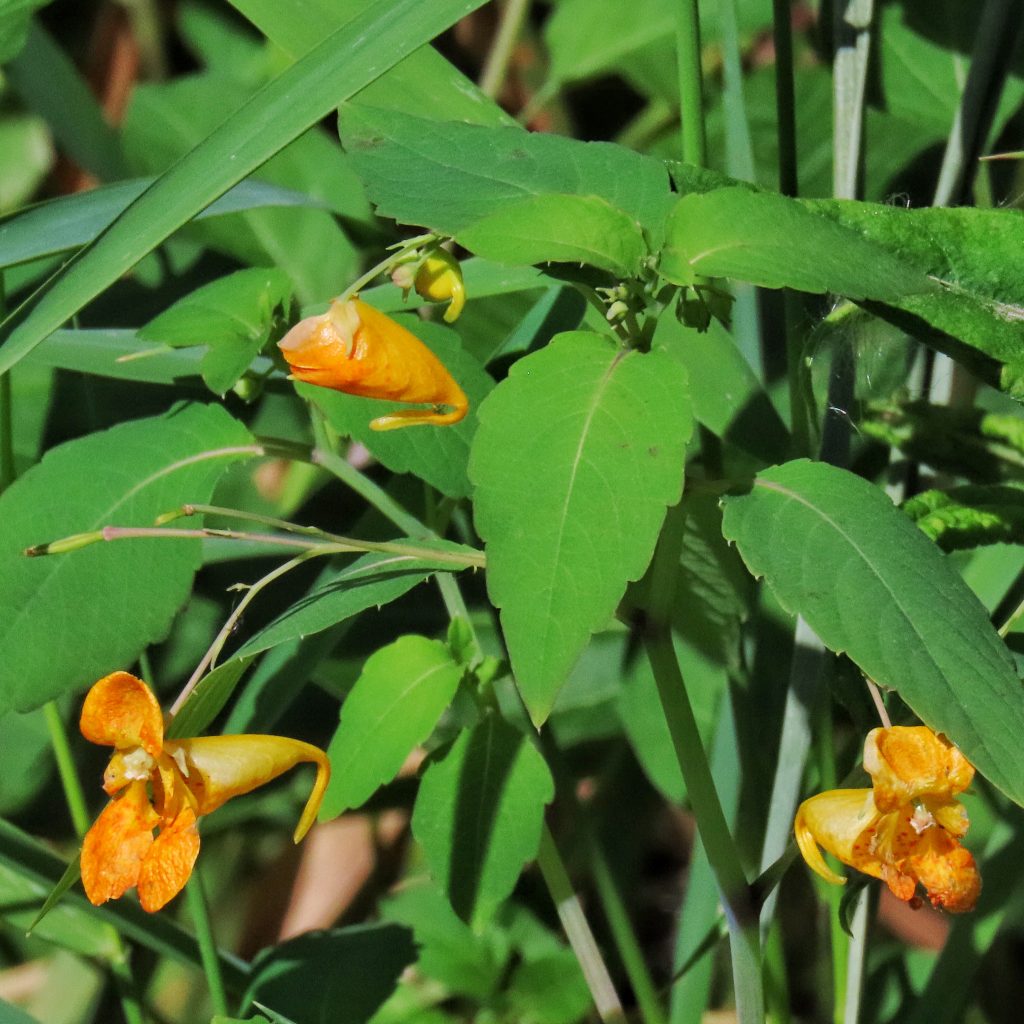
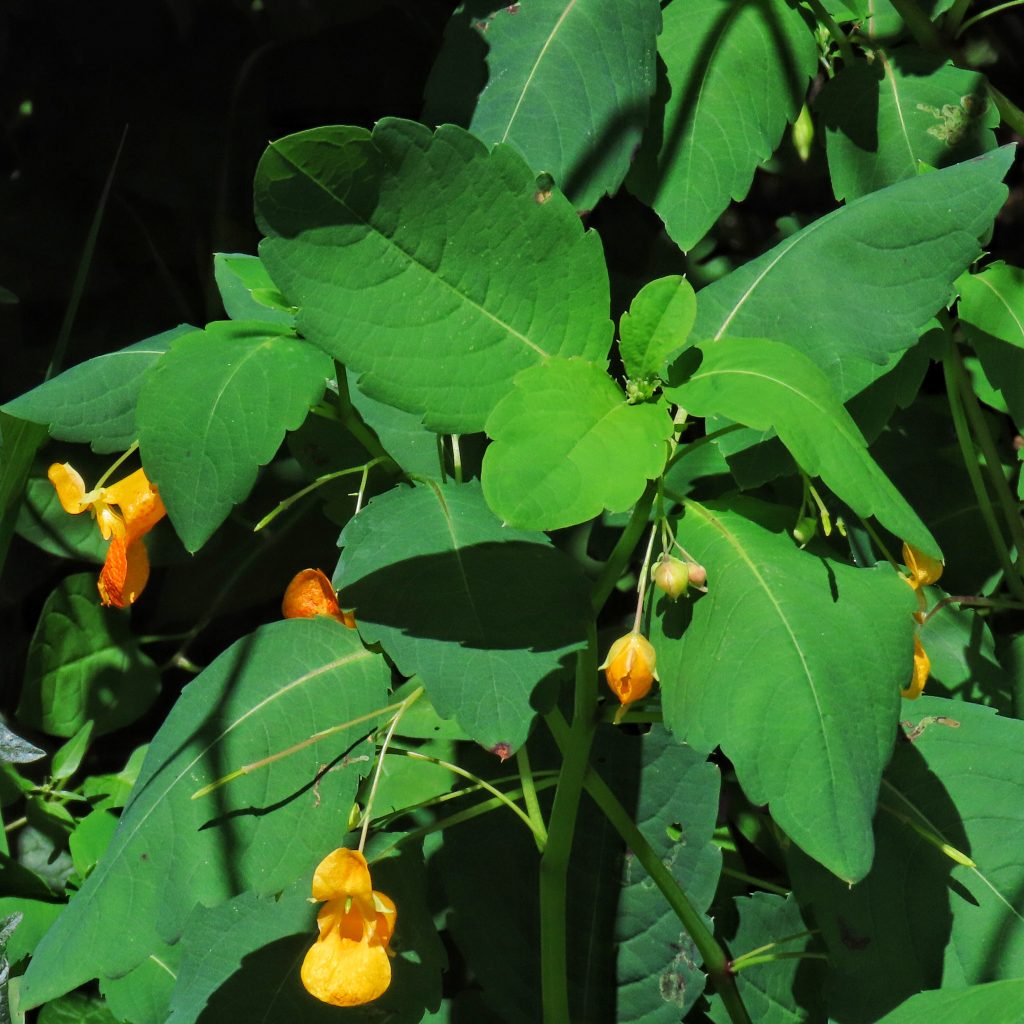
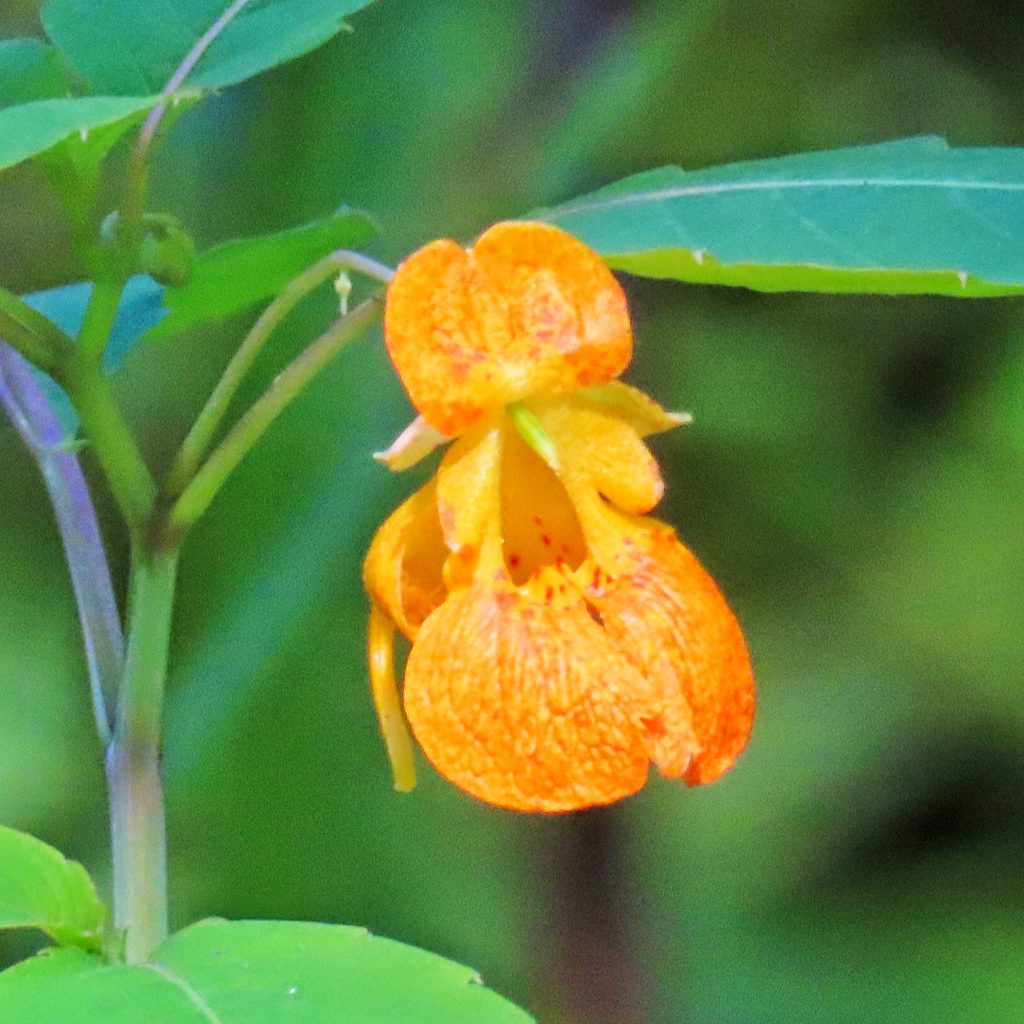
Grows along the N. Fork Lewis River at Daybreak County park. It’s enchanting plant. Pollinators love it
Actually it’s the East Fork Lewis at Daybreak. But it is an interesting, if invasive , plant.